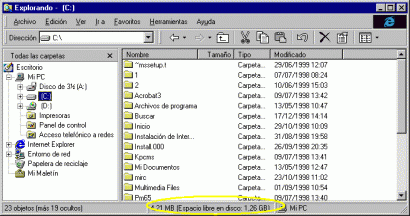 Let's think about our planet for a moment. Among the billions of inhabitants, all speak some language through which they communicate within a community of speakers. There are thousands of languages and that great variety is what makes up linguistic diversity.
Let's think about our planet for a moment. Among the billions of inhabitants, all speak some language through which they communicate within a community of speakers. There are thousands of languages and that great variety is what makes up linguistic diversity.
Languages are not static entities, but are living and dynamic realities. In fact, languages develop and even disappear. This is what happened with Latin, the language of the Roman Empire that evolved in its different variants until it became a new language, as is the case with French, Spanish or Italian, all of them with Latin roots.
Each language has a community of speakers, a vocabulary and a way of expressing reality. All these factors are changing and change over time, so the languages themselves also change. The Spanish of the 21st century and that spoken in the Middle Ages have elements in common and also great differences, since the same words are acquiring new meanings.
Linguistic diversity is one of the subjects of study of linguists, researchers and analysts of the phenomenon of language. One of the most controversial aspects is the coexistence between the inhabitants of a community who use more than one language. This diversity is a source of controversy when a group that uses one language tries to impose itself on those who communicate in a different language. Rivalry between groups with different languages is a worldwide phenomenon and has been going on since time immemorial.
Two or more languages can coexist without conflict even if one is the majority and the other or the others are not. Linguistic diversity does not necessarily imply a confrontation. It can also be a reason for cultural enrichment. This phenomenon occurs in some large cities such as New York, where a majority language such as English shares the same space with Chinese, Spanish or Russian.
In the same language the idea of linguistic diversity also appears. Spanish has a great variety of turns, expressions or accents and a Peruvian gets on perfectly with a Mexican, although some words cause confusion. Sharing a language means that there are similarities and also differences. From some linguistic approaches, the idea of unifying the variants of a language is defended and a standard model for speakers is proposed. This trend occurs in the media, in which local or dialect uses of a language are avoided. Other linguistic approaches consider that a standard modality should not be imposed on the others and each variant should be used with full freedom.
Linguistic diversity as a debate and subject of controversy shows that human communication is in permanent conflict; It is a source of confrontation and at the same time that same diversity enriches us. And it should not be forgotten that in his day a new language (Esperanto) was invented with the intention that humanity would have a common language. The proposal failed because surely we like to live in the Tower of Babel.









